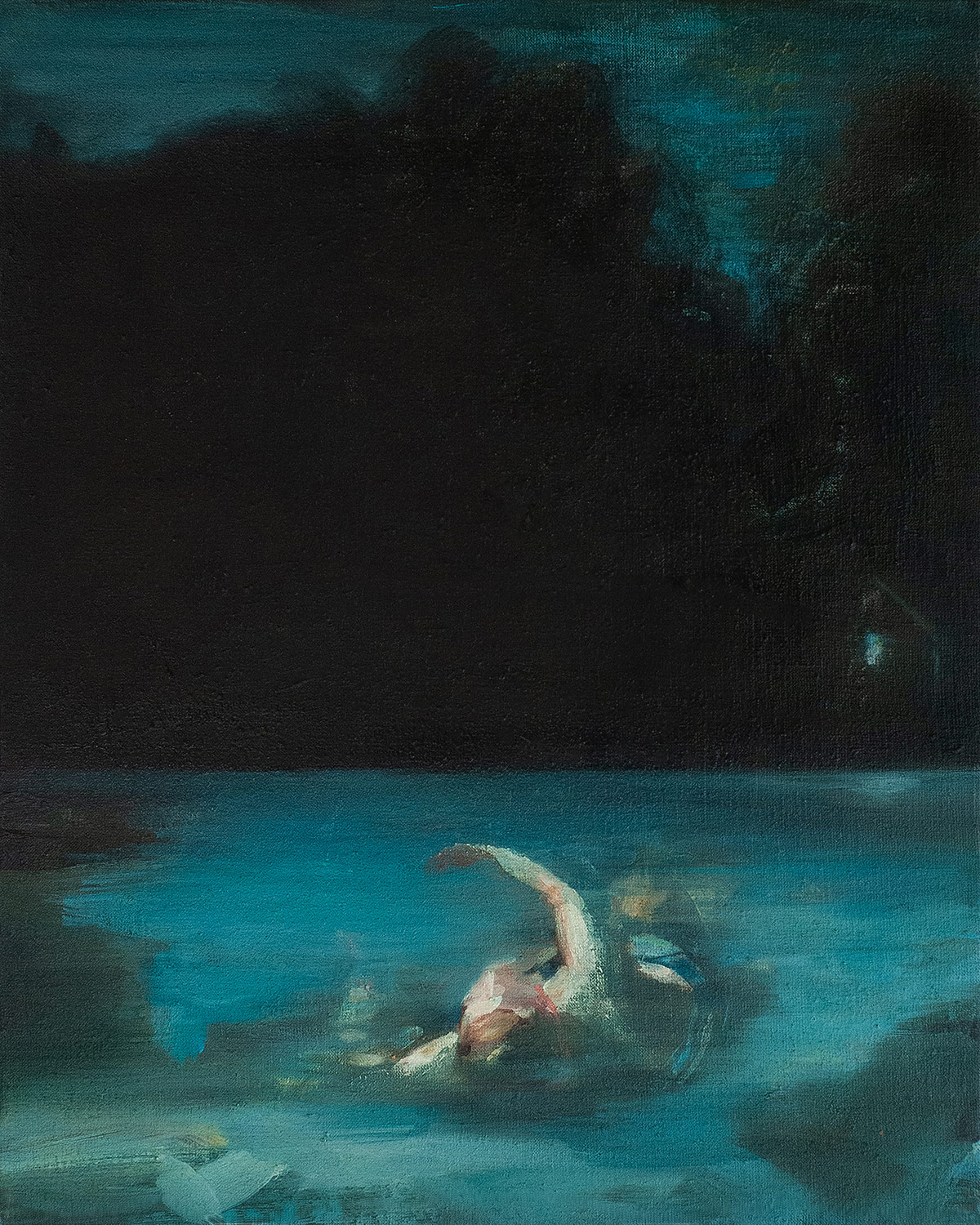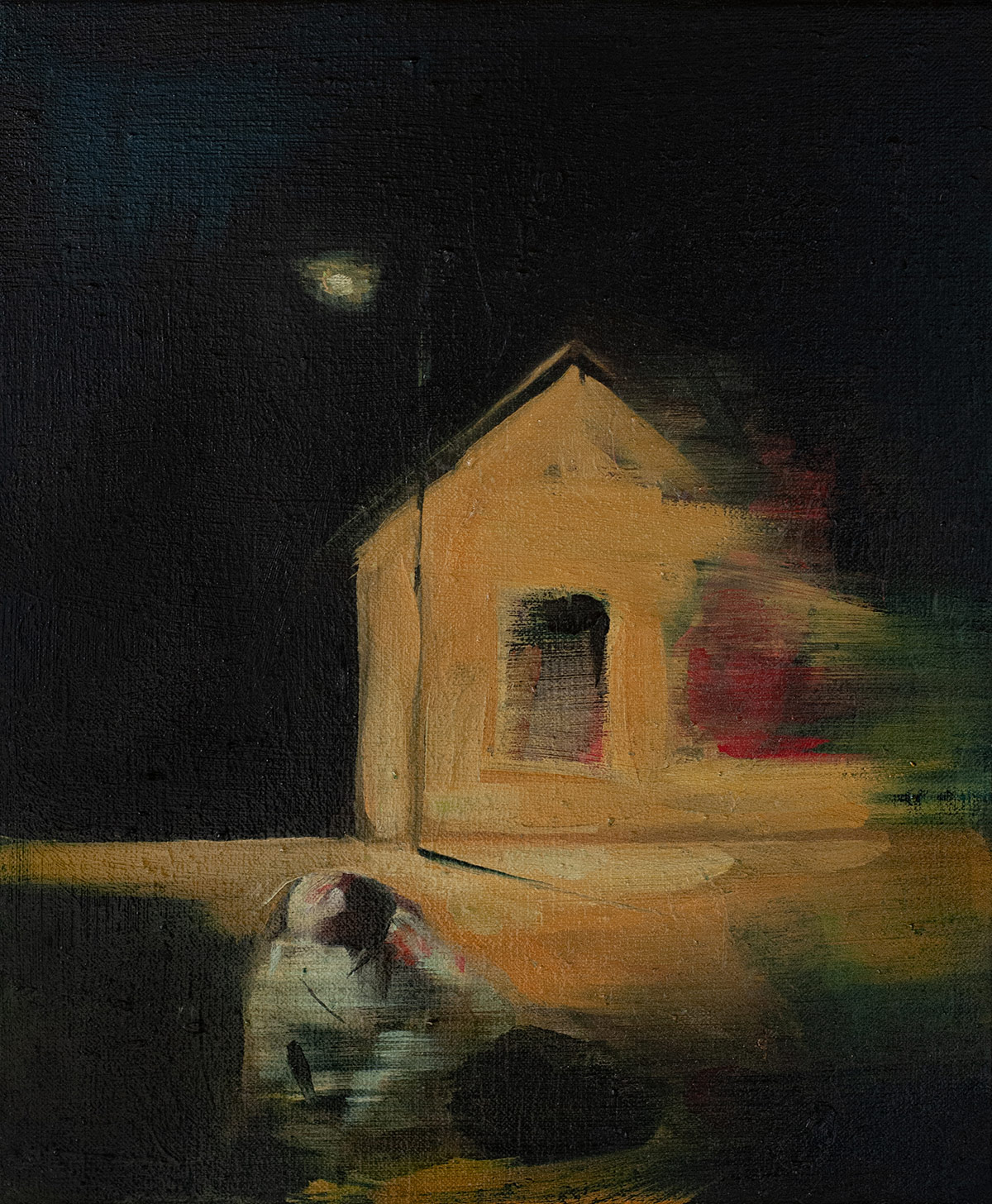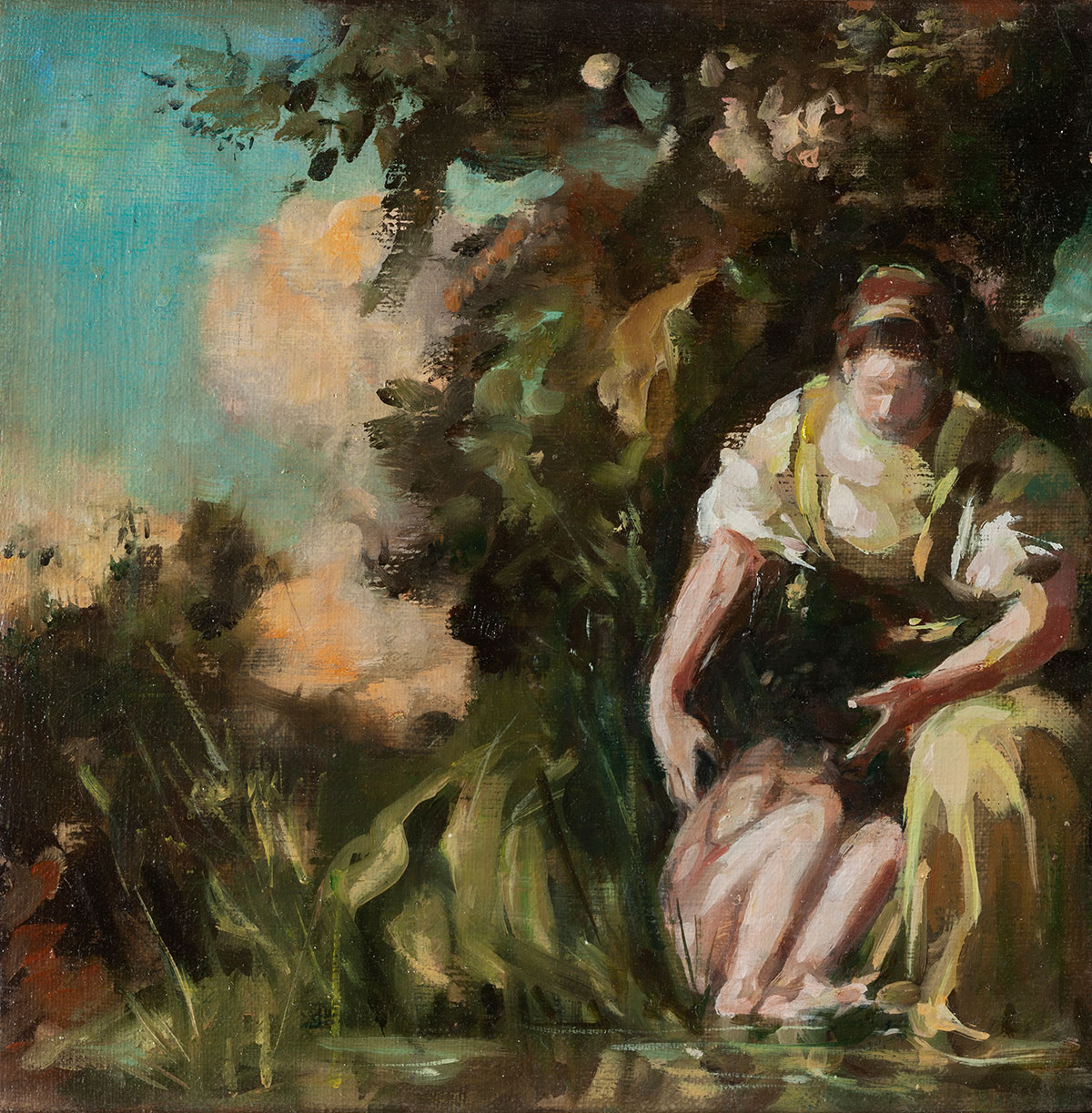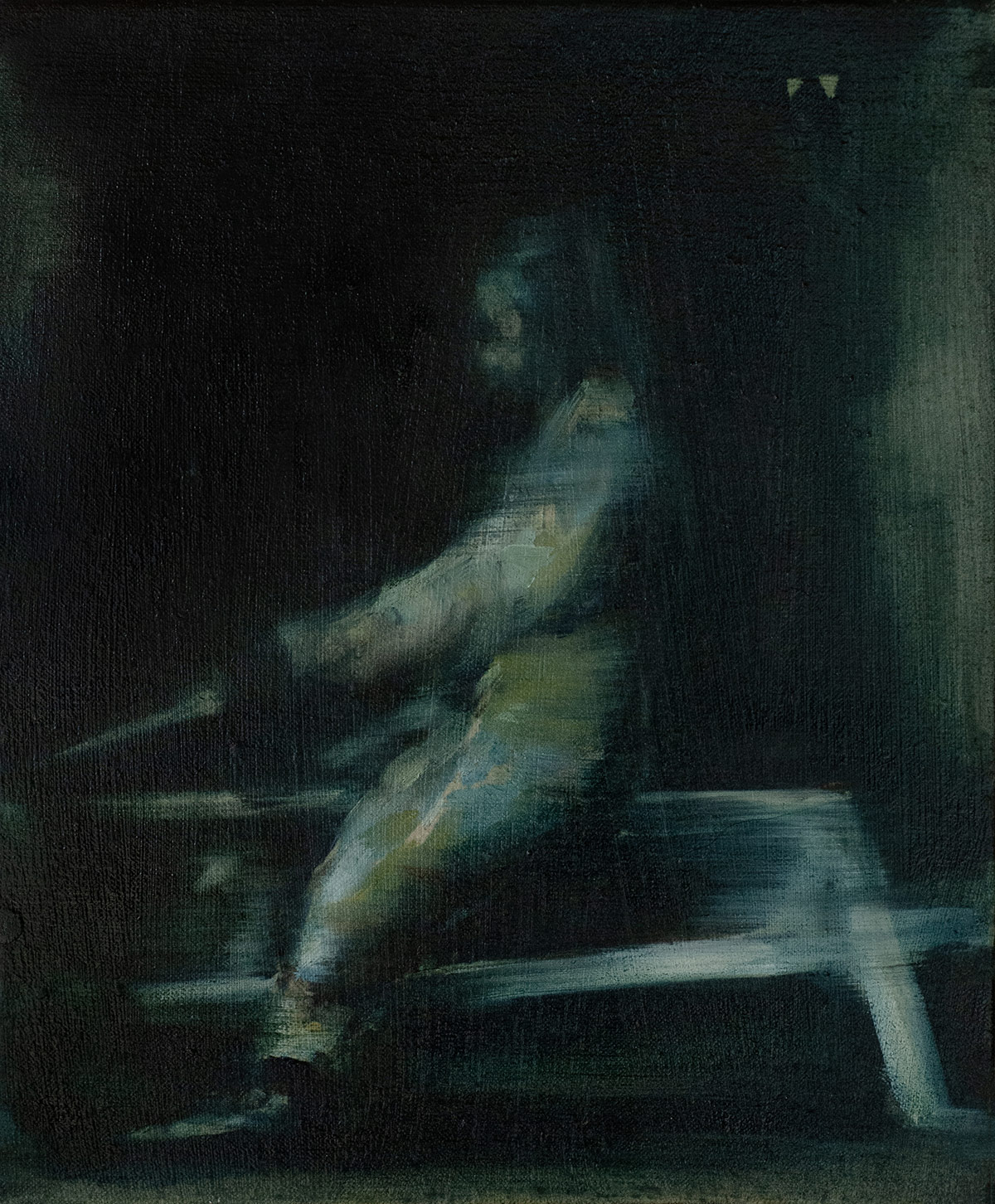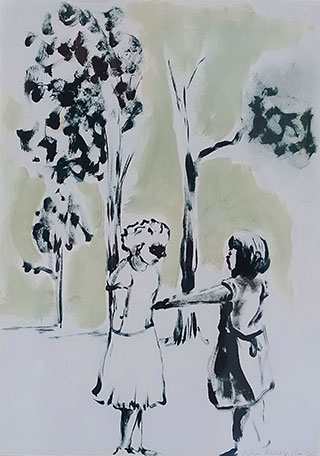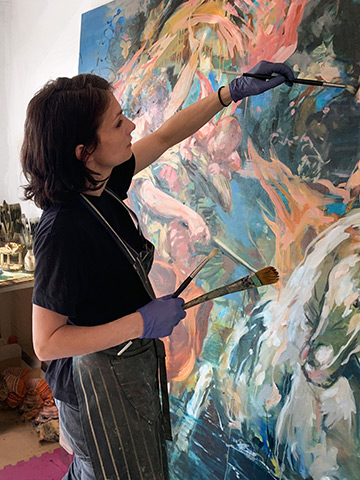Not a Fairy Tale

A figure emerges from the darkness, and in the darkness, it dies.
A dramatic shot, dramatic light, and dramatic mood define every image, every scene. Exactly: the scene. For Julia Medyńska, painting is a form of performance.
This way of thinking about images was certainly influenced by her first learned profession – acting; looking at seeing layers, shots, trying to be expressive. She prefers to tell his own stories rather than play roles in others’.
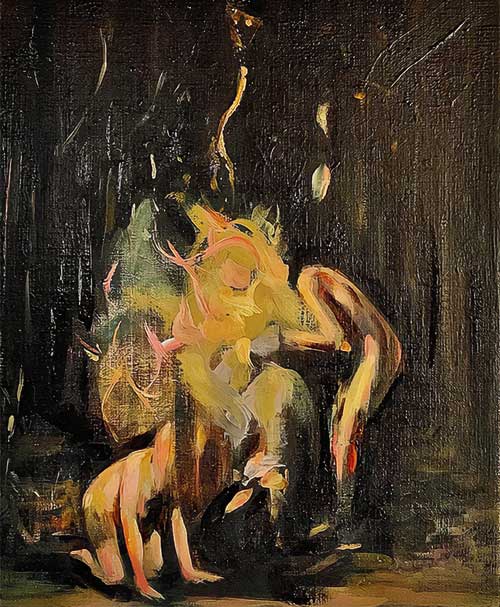
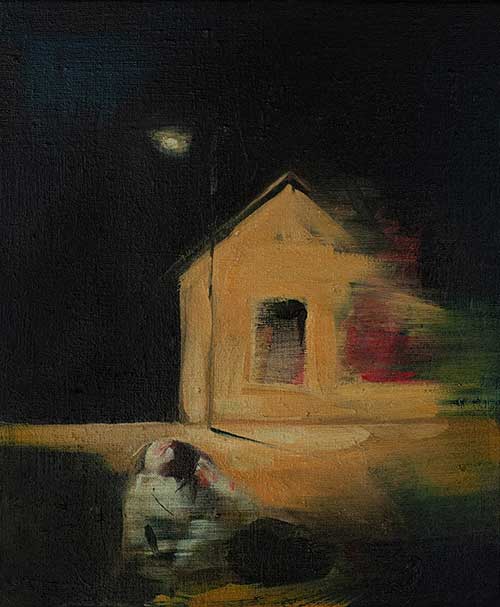
First there is black, a black background.
The painter-director paints the blank canvas black. She then wipes it to bring out the light. Only then does she lay down the colours.
The stories that happen on the canvas are at times chilling: naked people, probably children, with their heads enveloped by fire, like burning torches. Did their hair get caught in an innocent and careless game with matches, or did someone set it on fire in an act of sadism, punishment, revenge, stupidity?
Another image: a huddled figure in the foreground, and in the background, a house where an explosion has just occurred. Is this character a survivor or an arsonist?
Or the scene by the river: a woman holds a child above the current of the water, takes it out of the depths. Or rather, tries to drown it.
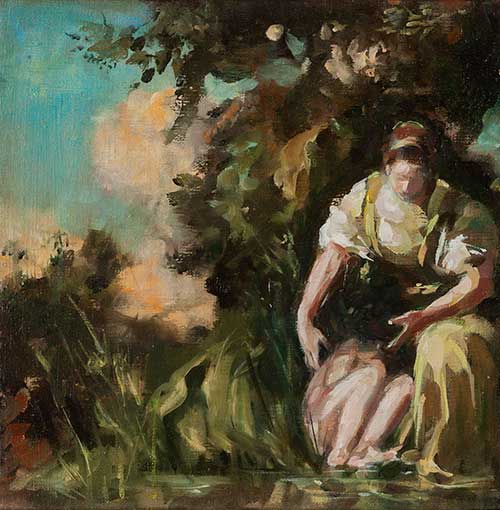
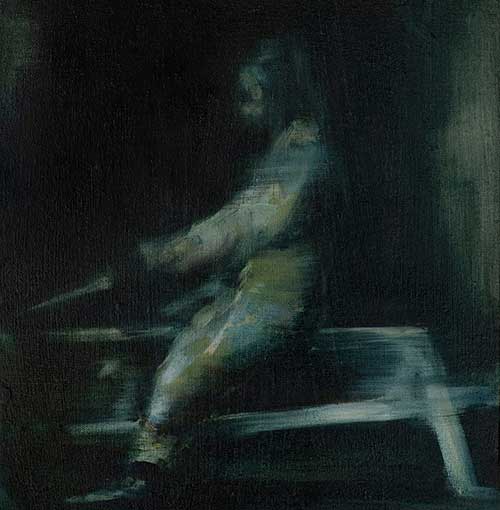
Ambiguity. Anxiety and mystery.
There are quite a few clichés imposed by fairy tales in these stories. The good nursemaid who lures children deep into the forest may turn out to be a bad one – a witch, the Baba Yaga, under whose gaze a person turns into stone, or spends years serving an old woman.
Who is good, who is evil? And does evil always win? These images are not children’s stories, so we are already assured here that no, not always, not in all circumstances.
Let’s not be fooled by the beautiful sunset. Cruel scenes play out in its light. And the painter-director says: My paintings are open to interpretation. I am not just talking about building an atmosphere of horror. Black humour often echoes in the background. Different emotions are needed in the performance that is painting.
The performance, charged with emotions, has its components: the dramatic play of characters – their expressive gestures, contrasts of darkness and extreme light.
The painting studio is adjacent to the artist’s family home. The Polish countryside, or actually an even more comfortable wilderness, an enclave of peace and quiet. Both buildings stand by a lake, with a strip of meadow on the horizon, and a forest beyond.
You can see the house, from the studio, the lights in the windows in the evening, like in a fairy tale.
Dusk over the lake, then darkness, and blackness.
It is time for the performance to begin.


